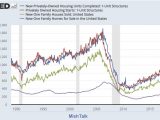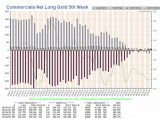
We’re Watching the Slow Poisoning of the Supreme Court
October 6, 2018On Saturday, Brett Kavanaugh's confirmation to the Supreme Court by a narrow 50–48 Senate vote ended one the the most vicious battles of a particularly vicious partisan era. The debate was initially about his record as an aggressively right-wing jurist (which followed a career in right-wing politics); after the accusation by Christine Blasey Ford that he tried to rape her when they were both teenagers, the country consumed itself in an argument over the veracity of the allegations, whether they were disqualifying, and which side was revealing itself to be more craven and underhanded. In response to the attempted rape claim from Ford and more misconduct allegations from other women, Kavanaugh lashed out during a hearing with a conspiratorial rant about how Democrats had been "lying in wait" with a "new tactic" once it became clear they couldn't defeat him through normal means. The moment led many of his former allies to conclude he lacked the temperament or neutrality necessary to hold a seat on the Supreme Court.
Kavanaugh was also accused of perjuring himself during that hearing, and many establishment voices—including more than 2,400 law professors—objected to his confirmation. But after all the protests, rancor, and largely self-serving speeches from senators, he was given a seat on the Supreme Court thanks to a nearly party-line vote, which would likely have been the result before Ford's accusations.
The episode demonstrated how hopelessly divided the country remains on not just political but moral matters, as if we needed more proof of that. But it also may have done more damage to the already wounded legitimacy of the Supreme Court. If anyone still believed justices served primarily as umpires whose role was to "call balls and strikes and not to pitch or bat," as Chief Justice John Roberts said during his 2005 confirmation hearing, they simply hadn't been paying attention.
Roberts himself stepped up to the plate when he guided the court in its Citizens United decision in 2010, loosening restrictions on political spending by groups nominally unaffiliated with campaigns. His court has also declared private citizens have a right to own firearms, gutted a key provision of the Voting Rights Act, signed off on voter purges by states, and crippled public sector unions, among other right-leaning decisions. (On the other side of the ledger, the court made gay marriage legal at the federal level and reined in some of the worst practices of the criminal justice system when it came to juvenile offenders.) Even though former Justice Anthony Kennedy, whose seat Kavanaugh now occupies, occasionally sided with the court's liberals, he more often formed a five-vote conservative bloc that found room in its judicial philosophy for every right-wing cause under the sun.
“The touchstone is not the Constitution but the Republican Party platform," said Peter Irons, an attorney, political scientist, and the author of A People’s History of the Supreme Court. "People like to say that these are conservative justices, but they’re actually radical and reactionary in the sense that it wants to keep government to the smallest area of competence that it has.”
Even if the bitterness of the Kavanaugh nomination fight were to somehow fade over the years, the court seems bound to continue down this right-wing path. As Irons pointed out, four of the five conservative justices are at least a decade away from normal retirement age, while liberals Ruth Bader Ginsberg and Stephen Breyer are both in their 80s. That means Trump could appoint at least one more justice before the end of his first term.
The court has tilted rightward before, but this time its domination by conservatives comes at a moment when it's also unusually powerful and politicized. With Congress paralyzed thanks to increasing partisanship, some court-watchers have warned that the justices have become more aggressive in how they rule on cases—the Supreme Court has essentially stepped into the power vacuum caused by a weak legislative branch.
At the same time, the conservative movement, upset that Republican-appointed justices like Kennedy failed to be reliable votes, have pushed GOP presidents to find justices whose ideology represented a deeper shade of red. Confirmation battles have gotten more heated in the past few decades, with a new standard being set in 2016, when the Senate's Republican majority refused to even hold hearings for Barack Obama's pick of Merrick Garland. That ended up being a victory for conservatives, since Donald Trump was able to put Neil Gorsuch in that seat after the presidential election, but more importantly, it established a new norm: There will be no compromises when it comes to the Supreme Court, and no tactic is too aggressive when it comes to conflicts over seats on the bench.
“Nowadays, the court is not the junior branch of the federal government, it’s a coequal branch with Congress and the presidency," said Peter Hoffer, a historian and the author of The Supreme Court: An Essential History. "To have nine people who were not elected and who are chosen by a strictly partisan, divided Senate and president of the same party, that makes the court very clearly one of the political branches, like Congress. The idea that the court is somehow different, that it’s not a political branch, that’s pretty much disappeared.”
(According to Gallup, 37 percent of Americans had a least "quite a lot" of confidence in the Supreme Court as of this year. That was much higher than the 11 percent who had confidence in Congress, but before 2007, confidence in the court rarely dipped below 40 percent.)
Hoffer noted that the notion the Supreme Court was free of the base politics that affects the other branches of government was probably never actually true. “It might have been an illusion, but it was a useful illusion," he told me. "It protected the legitimacy of the court.”
Though it's hard to measure a concept like "legitimacy," one way to quantify the court's partisanship is to look at how many decisions were decided by narrow 5–4 margins—and the proportion of 5–4 decisions has been steadily rising for decades.
You could see the erosion of that legitimacy in the Garland blockade, but also in the way Democrats and the left began to talk about the court afterward. Chatter of impeaching Kavanaugh was floating around, and some have taken to imagining a scenario where the Democrats retake Congress and the White House in 2020 but have their progressive legislation blocked by the Supreme Court. The only way forward then, the argument goes, would be appointing extra justices to "pack" the court—a scheme proposed by Franklin Roosevelt in response to a similarly right-wing Supreme Court in the 30s (FDR's plan was rejected by Congress, but the court became friendlier to his policies anyway).
Both Hoffer and Ford agreed that the justice who might prevent that kind of showdown would be Roberts himself, who controversially joined the liberals to uphold most of the Affordable Care Act in 2012. Roberts, Ford told me, “really cares about the court’s legitimacy,” a legitimacy that would be further corroded if the court struck down major legislation passed by Congress and signed by the president. The chief justice becoming more of a swing vote wouldn't change the overall rightward direction of the court, but it might be just enough to stave off widespread demands for dramatic changes like impeachments or court-packing.
But the mere fact that such schemes are being discussed openly by mainstream Democrats shows how far down the rabbit hole we've gone. The blocking of Garland was unprecedented, as were Kavanaugh's partisan attacks on Democrats during his hearing—what norms will the next nomination break? Minority Leader Chuck Schumer has promised to bring back the 60-vote threshold for confirmations if the Democrats retake the Senate in November, which would functionally stop Trump's future Supreme Court appointments. (If Trump lost in 2020, there would presumably be massive pressure to change the rules again so a Democratic president could get their justices confirmed.) Meanwhile, Trump has reportedly said he'd refuse to compromise with Democrats on justices if they gained control of the Senate, even if it meant a shorthanded court. Neither side seems willing to compromise, and why should they? In the current climate, total war in all aspects of politics is the standard. The same anger that marked the Kavanaugh debate has not gone away. It infects everything that happens in DC.
“I worked in Washington during the 60s and it was a very collegial institution," Ford told me. "Senators differed but didn’t take it personally, they didn’t denounce each other as evil—and that’s all gone. I don’t expect it to return to the old pattern anytime soon."
Follow Harry Cheadle on Twitter.


